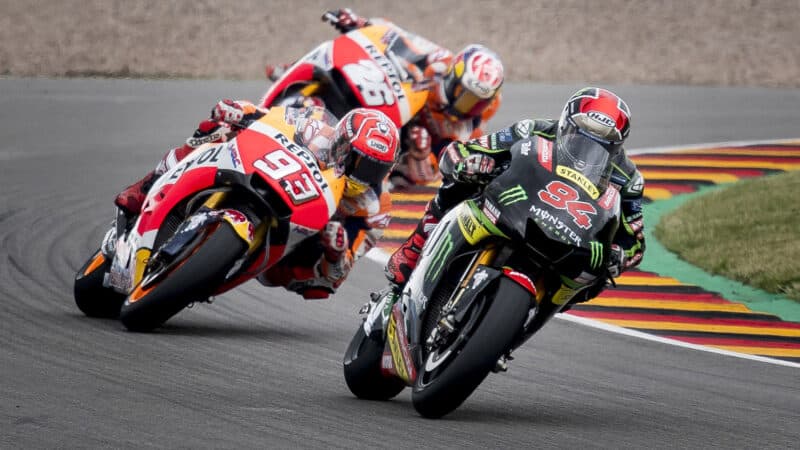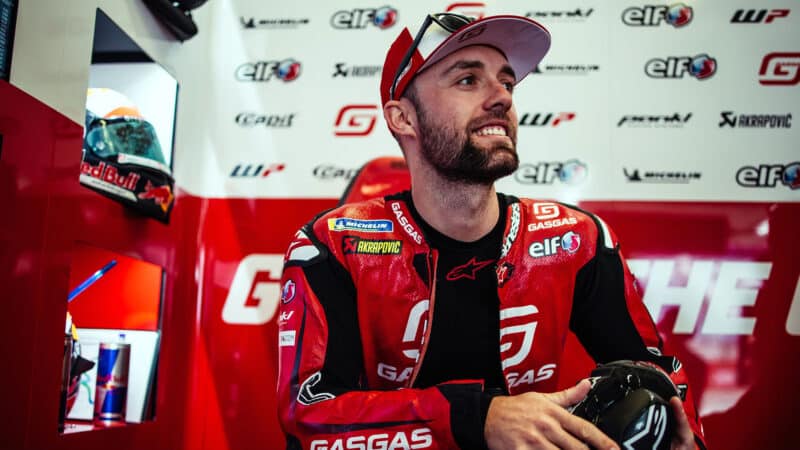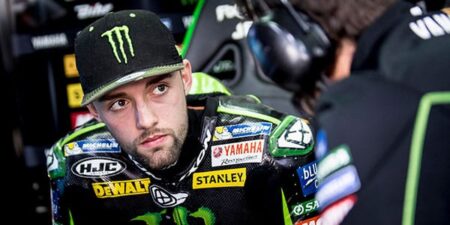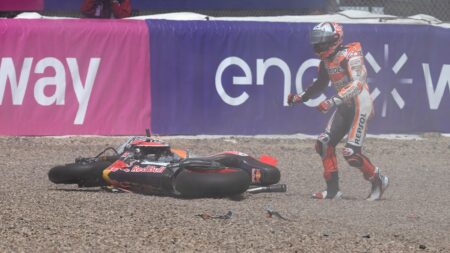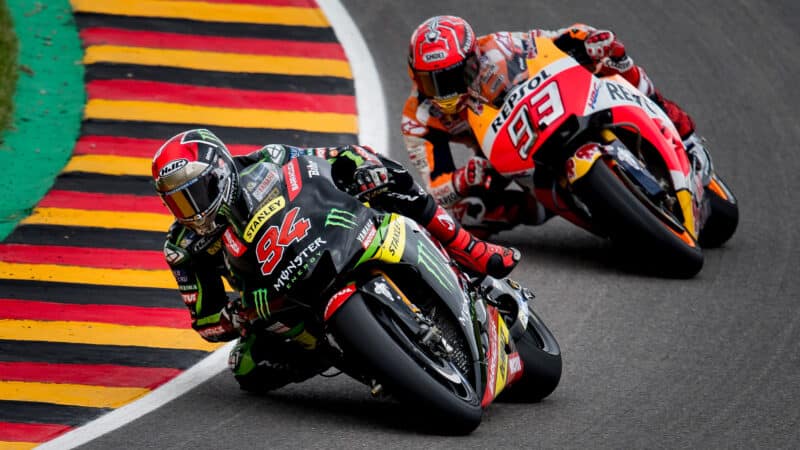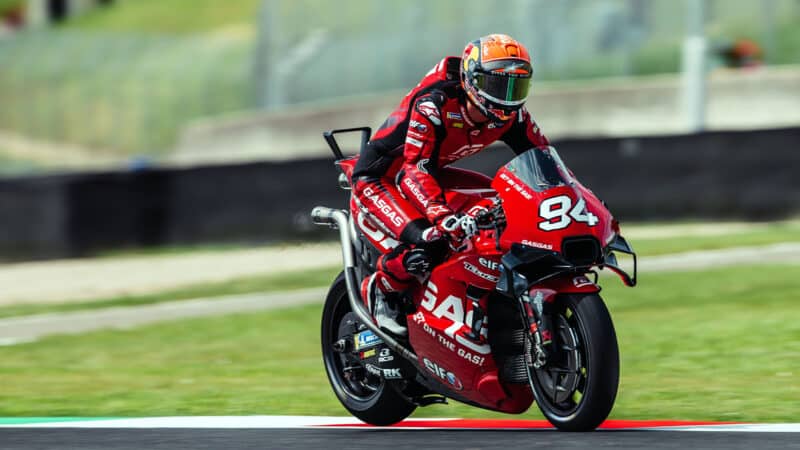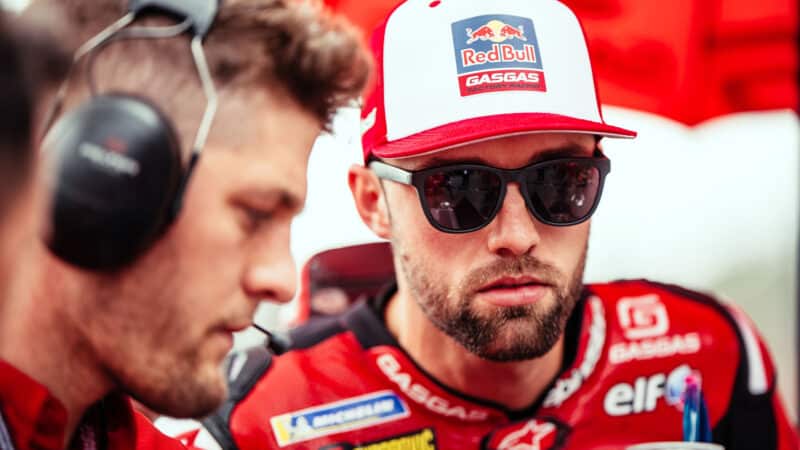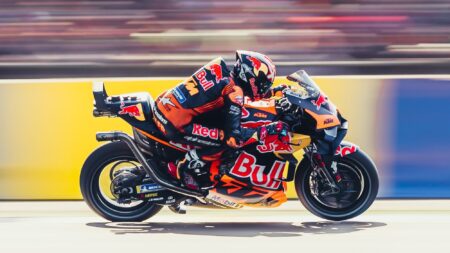You can very easily override the bike or underride it and it’s very, very difficult to get the timing of everything right. For example, when you have to reach so many degrees of lean angle with what percentage of throttle and when to reach a certain lean angle with how much brake pressure. So it’s a very, very, very narrow line in which these bikes are working. This makes it very technical, very unique and very hard to understand.
When I rode the M1, or when I ride a superbike, you can jump on them and use a more natural way of riding – you can ride them with so many different styles. Now it feels like every bike functions more or less the same way, so everyone is closer together.
So with a modern MotoGP bike you can’t create anything, you have to do what the bike wants?
Exactly, this is the way. Something new arrives that makes the bike faster, so the rider has to adapt to that and put that new feature into his riding and accept it. This makes it really hard.
The competition is getting tighter and tighter and at the same time all the bikes are getting closer, which makes it more dangerous because the riders are all together, riding at a higher level and at higher speeds, so you no longer have any room to give to another rider.
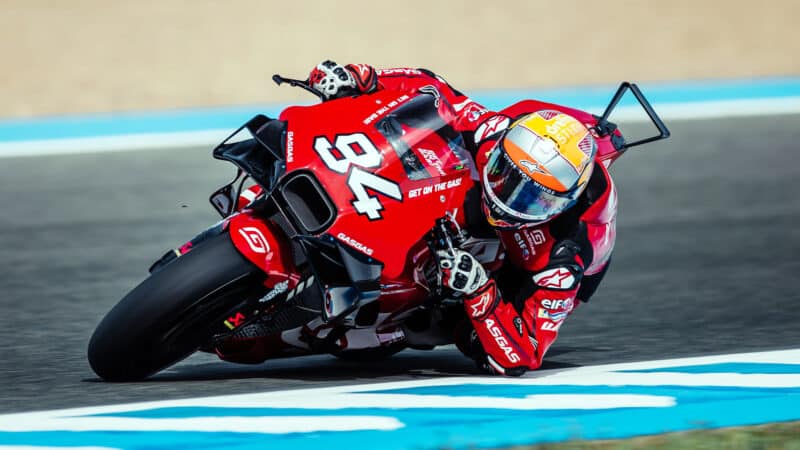
Folger during his second race on an RC16, April’s Spanish GP, where he finished outside the points
Tech3
Downforce aero basically glues the bikes to the ground, which makes them harder to manoeuvre, so how does this affect how you attack or exit corners?
That’s the timing I mentioned before. You cannot just throw the bike from one corner to another like you used to. You have to connect everything – using the throttle connection to make the bike mechanically lighter for changing direction, and using the throttle or rear brake to make the bike light or heavy.
To get the bike to pitch and transfer load between the tyres?
You don’t get that natural pitching during acceleration and braking anymore. The bikes are now much more static, with all the aero and downforce, so they’re more and more like go-karts.
How does that affect how you ride? You’re used to braking, which pitches the bike forward and loads the front…
It’s just a completely different feeling and you have to understand that. You feel the acceleration and deceleration and you feel the pressure, so you know what the tyres need, but you don’t have that transfer, so in corner entry you rotate the bike at the rear [i.e. sliding the rear] to take load off the front tyre and then turn in with the rear tyre.
The RC16 looks to be very good at that…
Yes, especially with Brad [Binder]!
While the Ducati is more wheels in line?
You don’t see it so much, but they also slide.
So the best way is to get the bike sideways and make it drop into the corner?
A normal rider would say a motorcycle brakes better fully straight but not these bikes. They don’t work so well braking in a straight line anymore – they want some lean angle and that’s how you brake, you brake with lean angle, so you rotate the rear on the brakes, to get some lean, which puts more rear tyre on the road.
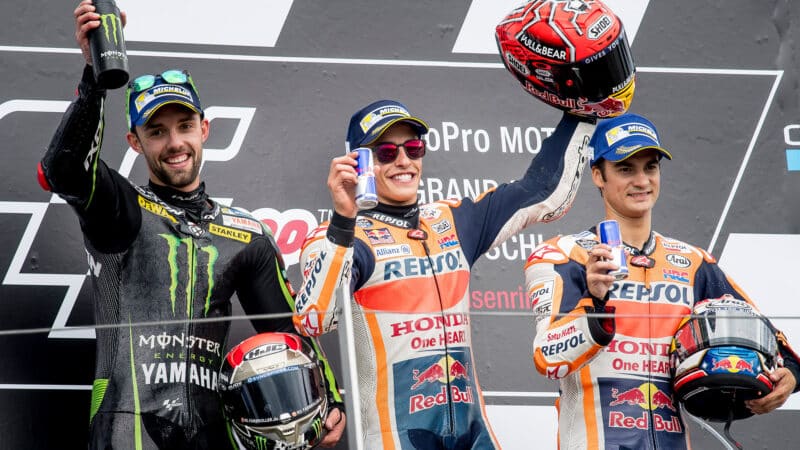
Folger shared the 2017 Sachsenring podium with Márquez and Pedrosa
Tech3
For example, when you see videos of Brad, you always see him make that movement [skidding the rear] and then he brakes. He never brakes straight, he rotates the rear and then brakes, which takes load off the front. The front is already heavily loaded, with all the downforce, so you try not to load it anymore by not braking just with the front. So it’s a very thin balance that you need to understand.
The starts sound crazy, because basically you’re riding a 300-horsepower hardtail, so what’s it like riding to the first corner with no suspension?
It’s super-strange. It feels like something is broken. With the holeshot devices you have no suspension, so everything is really hard and harsh, like you’re sitting in a go-kart.
